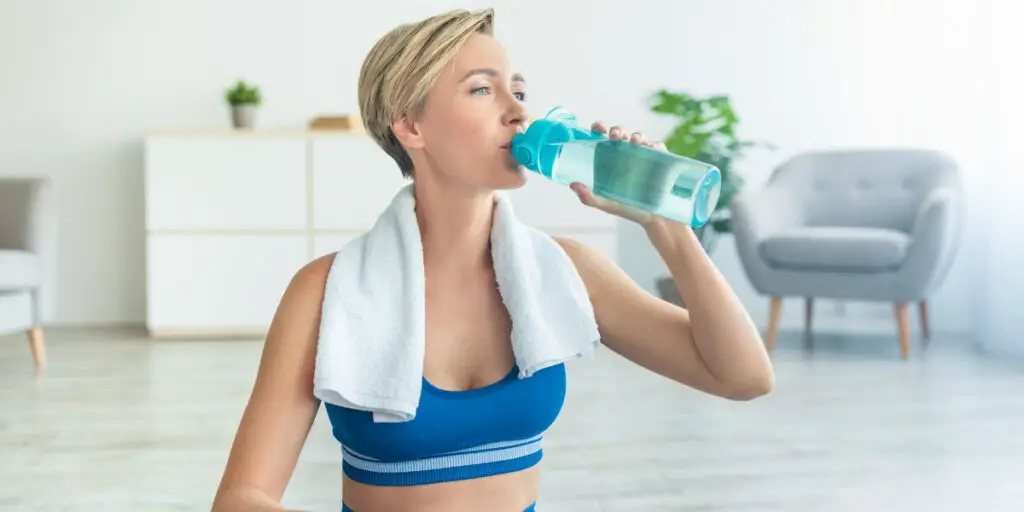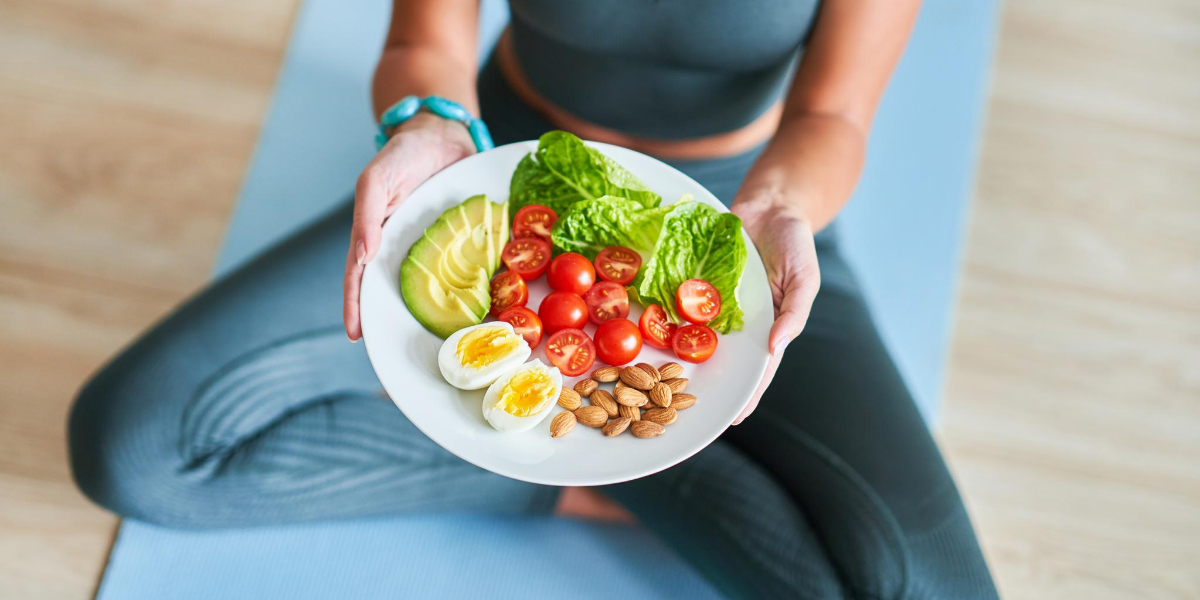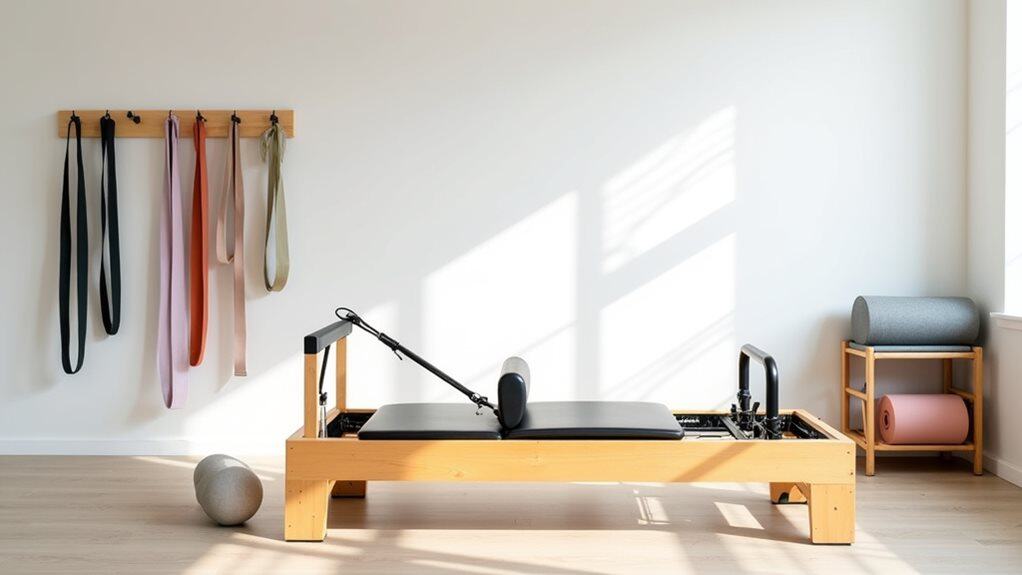Pilates is a fantastic and versatile exercise routine you can fit in to almost any time of the day. This has led many of my clients to ask if it’s OK to do Pilates after eating.
It is possible to do Pilates after eating. However, there are certain positions and movements in Pilates that may not be comfortable or safe to do on a full stomach. You should wait at least 1 hour after eating before doing a workout.
That’s the general rule, in practice it depends on what you’ve eaten and how you feel. Pilates emphasizes using your abdominal muscles, which could lead to stomach cramps if you’ve eaten too much. It’s best not to eat a big meal before performing Pilates because it might cause stomach cramps.
Nutrition experts recommend waiting two-three hours after eating before doing Pilates or any other exercise program.
There are pros and cons to doing Pilates after eating. On the plus side, if digestion has completed blood sugar levels are more steady, providing you with more energy for your workout. However, if you haven’t left long enough, you may feel bloated, uncomfortable and find it harder to take deep breaths when your stomach is expanded from a meal.
It’s also important to consider how you’ll get enough nutrients after a workout, such as protein shakes or light snacks.
Pilates is not a replacement for diet and exercise; it should be used in conjunction with them for the best results.
Can you do Pilates on an empty stomach?
While some people want to slip a workout into their daily routine after a meal, others like to get one in before settling down for some food, but can you do Pilates on an empty stomach?
Yes, you can do Pilates on an empty stomach. However, it is important to drink plenty of water throughout the practice so that your body can properly hydrate.
Do keep in mind that if you don’t have any food in your system then you may experience some dizziness and lightheadedness, so grabbing a small snack an hour before your sessions would be a good idea.
Most of my Pilates sessions are peanut butter powered! I love peanut butter and use it to make quick snacks that keep me powered up throughout my day.
The idea behind light snacks for Pilates is to provide the necessary nutrients to push yourself through class. A banana is a good option because it’s small and has high nutritional value, as well as being a great source of potassium–which can often be depleted during any type of exercise.
What are the best foods to eat before and after a Pilates class?
A lot of people are curious about what they should eat before and after a Pilates class. There is no one “right” answer to this question, as everyone’s dietary needs will be different.
It is generally recommended to avoid fatty foods before a workout, as they can slow you down and make you feel sluggish. Foods high in caffeine – such as coffee and cola – should also be avoided, as they can have negative impacts on energy levels.
My suggestions would be:
- Breakfast: porridge, add a touch of honey and a small amount of fruit.
- Main meals: a protein-rich meal. For those of you who eat meat that would be something like a chicken salad. As a vegan, that means I’ll have a plant based alternative (search google for ‘high protein vegan meals’)
- Snacks: Fruit, nuts, yogurt, peanut butter on vegetables
Remember that it is important to stay hydrated during and after any workout session, so drink plenty of water both before and after your Pilates class.

One of the reasons Pilates is so great for your body is that it keeps you in a lower-level workout mode even after leaving class. This means that you can continue burning calories long after leaving the studio!
When you’ve finished your class, aim to refuel within 60 minutes with protein and complex carbohydrates. Some good options include a scrambled egg breakfast wrap, tuna and brown rice salad or salmon and roast vegetables.
As far as what to drink after class, the recommended post-class drink is a smoothie. Smoothies are easy to digest and provide your body with a good amount of protein, carbs, and healthy fats. Some great ingredients to include in your smoothie are protein powder, almond milk, and chia seeds. You could also try including fruit, protein powder, and superfood powder.
On rest days, aim for a balanced meal that includes carbs, proteins and healthy fats. This could be something like a whole grain sandwich with lean meat or fish, fruit salad and nuts or yogurt with berries and granola. And as always, focus on eating plenty of fruits and vegetables throughout the day!
Are there any poses that should be avoided after eating?
There are certain poses which should be avoided after eating because when you eat, your body is working to digest the food and assimilate it into your system.
If you do any strenuous exercises or poses immediately afterwards, you could actually hamper this process and end up feeling uncomfortable or bloated.
Instead, it is recommended you wait at least an hour after eating before doing any strenuous activity or poses.
This will give your body enough time to do its thing without having to worry about anything else. So go ahead and enjoy your meal–just don’t forget to wait a little before hitting the mat!
How long after eating should you wait before doing Pilates?
It’s best to wait at least two hours after eating before doing Pilates. During this time, your digestive tract will still be working hard to break down the food you just ate.
If you try to do Pilates right away, you may experience some discomfort due to the fact that your body hasn’t had time to fully absorb all the nutrients from your meal yet.
What are some modifications for Pilates if you have a full stomach?
If you’re doing Pilates and you have a full stomach, there are a few modifications you can make to your workout.
For starters, try avoiding exercises that involve twisting or bending at the waist.
You may also want to focus on lighter-weight exercises and shorter routines.
Additionally, be sure to drink plenty of water before and after your workout to help with digestion.
If you’re feeling adventurous, consider reducing the number of repetitions or sets for each exercise. You should also focus on Pilates poses that work your abs without putting any pressure on your stomach.
Finally, be sure to listen to your body, it will tell you if it is ready to do the moves you’re attempting.
Is it better to do Pilates on an empty stomach or a full stomach?
There are many benefits to doing Pilates, including improving flexibility, strength and posture. But what if you’re not sure whether to work out on an empty stomach or a full stomach?
It’s best to eat a good meal before working out. This will give you the energy you need for your session and help prevent dizziness or lightheadedness. Try consuming fruits, nuts and berries for morning workouts.
If you’re doing a Pilates session in the evening, have a full breakfast and eat lighter snacks before the session and a meal afterwards.
Most experts agree that 30 minutes after finishing your workout is the optimal time to eat something healthy. Within this window of time, your body will be able to properly absorb the nutrients from your food and use them for muscle recovery.
Drinking water before, during and after your Pilates session removes toxins and helps restore lost fluids.
What are the risks of doing Pilates on a full stomach?
When you go to a Pilates class, the last thing you want is to feel sick or uncomfortable. Unfortunately, if you eat a large meal before your workout, that’s exactly what might happen.
Here are some of the risks associated with doing Pilates on a full stomach:
- You may feel lethargic or tired during class. This can be especially dangerous if you’re doing more advanced Pilates moves.
- You may not be able to work out as hard as you would have liked because your energy levels will be depleted.
- You’re more likely to experience nausea or dizziness during and after your workout.
- Your body will not be able to digest food properly, which can lead to gastrointestinal problems.
The best way to avoid these risks is to eat something light an hour before your class starts. Foods like chicken, salmon, or pork are all good sources of protein and will help keep you energized throughout your workout.
Avoid eating carbs right before Pilates, as they cause a release of insulin which will deplete energy levels quickly.
How can you make sure you’re doing Pilates correctly on a full stomach?
It is important to make sure you’re doing Pilates correctly on a full stomach. If you’re not feeling your best, it’s likely because you haven’t eaten enough or have eaten the wrong things.
Aim to eat a balanced meal about an hour before your Pilates class to give you sustained energy throughout the workout.
During the workout listen to your body. If you feel uncomfortable (or perhaps that should be more uncomfortable than you usually feel!) then it might be your body letting you know you need to give it a little more time to work on the meal.
If this happens, let your Pilates instructor know what the issue is, and they might be able to provide a modification to the current exercise that allows you to continue without feeling discomfort.
Final thoughts
Your body is a complex machine. Learn to listen to the feedback it gives you. Experiment with different meal types and snacks before any form of exercise and understand the impact of different foods on your training.
Sources
https://www.health.harvard.edu/healthbeat/a-good-guide-to-good-carbs-the-glycemic-index




